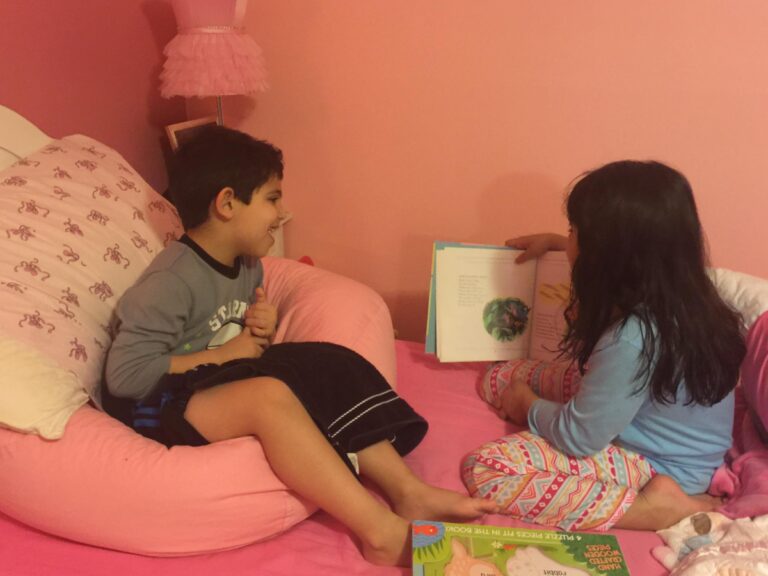As a proud mama of an adorable little girl, I’m excited to share my experiences raising a multilingual child. For those considering a similar journey, I understand it can be overwhelming. But fear not, I’m here to offer some advice and tips to make it easier.
My husband hails from Japan, and his native tongue is Japanese. As for me, I’m a born-and-raised American and my language of choice is English. Though we live in the U.S., we’re committed to raising our daughter to be bilingual.
From the very moment our daughter was born, we exposed her to Japanese and English. We spoke to her in both languages and read her books in both languages as well. Starting early, our daughter was able to absorb both languages with incredible speed.
If there’s one key to successful language learning, it’s consistency. We make a point of using Japanese regularly, whether it’s speaking to our daughter, reading to her, or even letting her watch Japanese children’s shows. This approach has allowed our daughter to become more at ease with the language, which has made switching between Japanese and English more effortless.
RELATED: Make Wanderlust a Must: Raising Kids Who Love to Travel
Of course, like any journey, there are obstacles to overcome. One of the biggest we’ve faced is language mixing. Our daughter will often interweave Japanese and English words within a single sentence, which can be confusing for those who aren’t familiar with both languages. But rather than reprimanding her, we find it more effective to gently correct her. This helps her understand that each language has its own unique words and phrases.
Overall, raising a multilingual child has been a wonderful experience for our family. We’ve seen firsthand how it can enrich a child’s life, broaden their perspectives, and help them communicate with a wider range of people. And with a little perseverance and consistency, it’s a journey that any family can embark upon.
Living in the United States presents a Herculean task for parents who aspire to expose their offspring to a different language, especially when it comes to Japanese, which is an unorthodox language to learn in an English-speaking country. Opportunities to practice speaking the language with native speakers are sparse, and finding language classes and events can be an onerous, time-consuming effort. Nevertheless, the benefits of teaching children another language and culture far outweigh the tribulations of seeking out learning opportunities.
Incorporating Japanese into daily routines is a paramount part of the learning process. From a young age, we’ve asked our daughter if she prefers to have a glass of “mizu” (water) or “o-cha” (tea) when she is parched. Furthermore, when engaging in recreational activities, we count in Japanese to immerse our daughter in the language’s numerals. These experiences highlight how Japanese is utilized in mundane situations, making it more relevant and practical for her.
RELATED: I Used To Teach You Everything, Now You’re Teaching Me
The ideal method for teaching a language to children is by making the process enjoyable, interesting, and stimulating. We use games, songs, and stories to incorporate Japanese into our daughter’s playtime, making the learning process entertaining and exciting. Additionally, we watch Japanese children’s shows together, which expose our daughter to the language’s dialect, colloquialisms, and idiomatic expressions, broadening her vocabulary and knowledge of the culture. The key to encouraging a lifelong love of language learning and fostering an interest in other cultures is by keeping it enjoyable and fascinating for children.
Learning a language is a lifelong journey, and it requires patience and perseverance. Don’t expect your child to become fluent in a snap of a finger or be fluent overnight. There will be setbacks along the way, but it’s vital to celebrate every small accomplishment, such as your child’s mastery of a new word or phrase. Don’t forget, progress takes time, and perseverance is the key to success.
Raising a multilingual child is a formidable challenge, but the rewards are immense. By starting early, being consistent in practice, incorporating language learning into daily routines, making it fun, and being patient, you can aid your child in becoming bilingual or even trilingual. It’s an investment in your child’s future as the ability to speak multiple languages can open up a plethora of opportunities in their personal and professional life.

If you liked this, you'll love our book, SO GOD MADE A MOTHER available now!
Order NowCheck out our new Keepsake Companion Journal that pairs with our So God Made a Mother book!
Order Now















